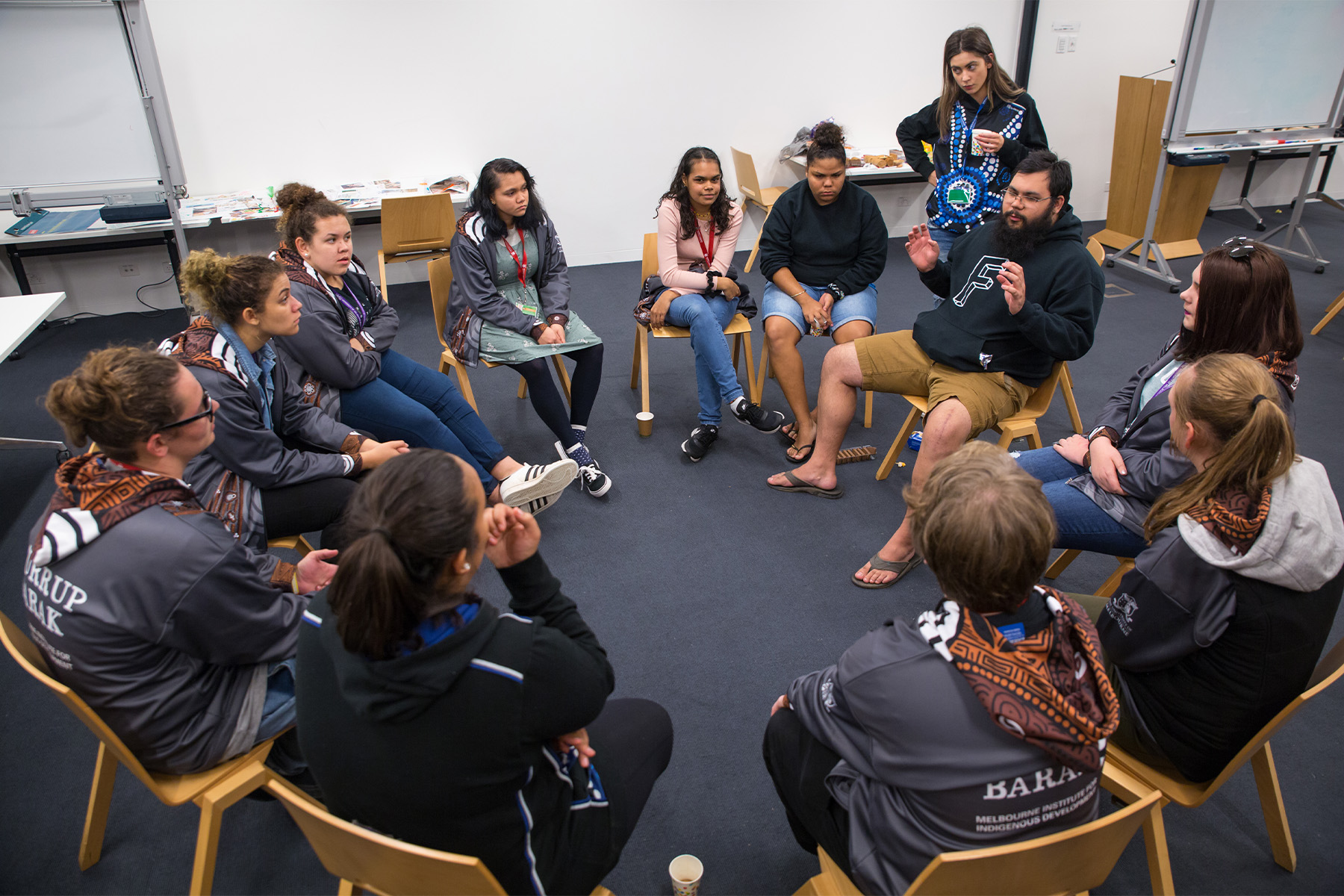
Helping more students ‘see themselves’ in the classroom

Increasing the diversity of Australia’s teaching workforce hasn’t been a policy priority. It’s time for a rethink
Published 9 October 2023
Australia’s teaching workforce doesn’t reflect the diversity of our population.
That means too many Australian children are missing out on the opportunity to be taught by someone who looks like them.

Only one per cent of teachers report a disability – compared with 18 per cent of the population. Similarly, only 17 per cent were born overseas compared with 34 per cent of all Australians, and less than one per cent identify as Indigenous compared with three per cent of the population.
People from low socio-economic backgrounds are also under-represented in the teaching workforce.
This lack of diversity contributes to Australia’s well-documented teacher shortage. But, perhaps more concerningly, it sells our most disadvantaged students short.

We recently published a review of international research on teacher diversity, Seeing Ourselves at School. We found teachers from underrepresented groups tend to increase student achievement – particularly among their representative group, but also among the rest of the student population.
Teachers from minority groups act as academic role models and can help minority students navigate sometimes alienating systems. They also tend to have a better understanding of relevant cultural contexts and are more adept at building bridges with families and wider communities.
Importantly, they also have higher expectations of students from minority groups, which can help break the cycle of low expectations that can contribute to educational disadvantage.
And there are benefits for non-minority students, too.
Teachers from diverse backgrounds enhance all students’ cultural awareness and can help shift negative perceptions of minority groups.

Additionally, supporting teachers from minority groups to become teachers could help address Australia’s teacher shortages, particularly in rural and disadvantaged areas where schools find it difficult to fill vacancies. We found teachers from minority groups are more likely to stay in hard-to-staff schools and to build powerful community connections.
Australian policy-makers tend to focus on addressing supply gaps in the teaching workforce (like recruiting more maths teachers). This is an understandable but ultimately inadequate response to teacher shortages. We also need to consider (perhaps for the first time) how the workforce should look and prioritise initiatives for making it more representative.

We discovered a range of approaches already used in some corners of Australia, as well as elsewhere, that could help with this.
There is strong evidence for ‘grow-your-own’ programs, which are widely used in the United States to increase the number of Black students becoming teachers.
Simply put, these programs provide financial and mentoring support to people already working in school education support or administration roles to become fully qualified teachers.
By recruiting people with existing community connections and a demonstrated interest in educating young people, grow-your-own programs tend to produce teachers who stay in the communities they come from and share the cultural knowledge held by those communities.
Since 2017, over twenty US states have passed laws allowing these programs. Here in Australia, there is a handful of similar programs designed to increase teacher diversity in New South Wales, the Northern Territory and Western Australia, with the latter two mainly focussed on recruiting Indigenous teachers.

Expanding these programs would be a great start.
Other initiatives worth considering include high school academies, where senior high school students teach in primary schools while completing some university teaching subjects, housing support for teachers (who face increasingly expensive housing on relatively modest salaries) and improving pathways from vocational courses into teaching degrees.
Of course, once we attract teachers from minority groups, we then need to keep them. In the US, where teacher diversity is better researched, systemic and local inequities and racism work against retaining teachers from minority groups.

Most minority teachers work in high-poverty schools where the working conditions are poorer and the salaries lower.
We see similar trends here in Australia among Indigenous teachers, with around 36 per cent intending to leave the profession before they retire, compared with 25 per cent of the overall workforce.
Acknowledging this reality is important and we must respond by providing better support for teachers from minority groups – particularly those working in hard-to-staff schools.
Well-designed induction programs, culturally-responsive mentoring and support networks, targeted pathways to leadership positions and workplace accommodations (particularly for people with disability) are all important initiatives – as well as ensuring workplaces are inclusive and culturally safe.

It is also incumbent upon schools to guard against ‘outgroup overload’, where people from diverse backgrounds end up overwhelmed with additional work as a minority representative (for example, when Indigenous teachers are expected to be the ‘go-to’ for all things Indigenous).
Finally, we need to know more about what our teaching workforce looks like. This requires better data collection and greater research efforts focusing on teacher diversity.
A more diverse teaching workforce will address long-term staffing issues. But, most importantly, it will build achievement, engagement and attainment among groups of students who have traditionally not been well-served by our current education system.
Banner: iStock


